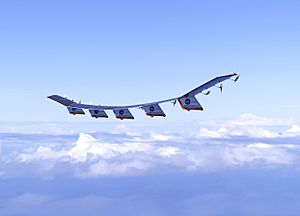Aviation facts for kids
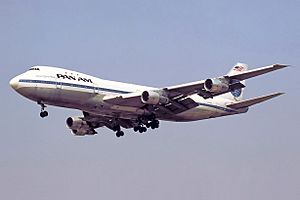
Aviation is all about flying! It's the way we design, build, fly, and use aircraft, especially planes that are heavier than air. It covers everything from early flying machines to today's giant passenger jets and even spacecraft.
Contents
What Does Aviation Mean?
The word aviation was created by a French writer named Gabriel La Landelle in 1863. He got the idea from the Latin word avis, which means "bird." So, aviation basically means "the act of flying like a bird."
A Brief History of Flight
Early Dreams of Flying
People have always dreamed of flying! Ancient stories tell of characters like Icarus from Greek myths and Jamshid from Persian legends who tried to fly. Later, there were some real attempts, like the flying machine built by Archytas (a Greek thinker) and short flights by people like Abbas ibn Firnas and Eilmer of Malmesbury. There was even a hot-air machine called the Passarola by Bartholomeu Lourenço de Gusmão.
Lighter-Than-Air Flight
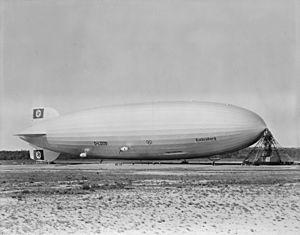
Modern aviation really took off on November 21, 1783. That's when the Montgolfier brothers launched the first hot air balloon with people in it! It floated freely, but balloons could only go where the wind blew.
People quickly realized they needed a way to steer balloons. Jean-Pierre Blanchard flew the first steerable balloon in 1784. He even crossed the English Channel in one in 1785.
Giant airships, like those made by the German Zeppelin company, became the first aircraft to carry passengers and cargo over long distances. The most famous was the Graf Zeppelin. It flew over a million miles, even around the world in 1929!
However, as airplanes got better, airships became less popular. The "Golden Age" of airships ended on May 6, 1937. This was when the Hindenburg airship caught fire, and 36 people died. This accident led to big changes in how airships were built. Since then, airships are mostly used for special jobs, not for regular travel.
Heavier-Than-Air Flight
In 1799, Sir George Cayley came up with the idea of a modern airplane. He imagined a machine with fixed wings that had separate parts for lifting, moving forward, and steering.

Many people tried to build the first powered airplane. Clément Ader flew his bat-winged plane, the Ader Éole, for about 50 meters in 1890. This was a very early powered flight.
The Wright brothers made the first truly successful powered, controlled, and lasting airplane flight on December 17, 1903. They invented a way to control the plane in three directions, which was a huge step forward. Just ten years later, at the start of World War I, planes were used for looking around, helping artillery, and even attacking targets on the ground.
Planes soon started carrying people and cargo as they became bigger and more reliable. The Wright brothers even took their first passenger, Charles Furnas, for a ride in 1908.
The 1920s and 1930s saw huge progress in aviation. Famous flights included the first nonstop flight across the Atlantic Ocean by Alcock and Brown in 1919. Charles Lindbergh flew solo across the Atlantic in 1927. The Douglas DC-3 became the first plane that made money just by carrying passengers. This started the modern age of airline travel.
After World War II, many pilots came home from the military. There were also lots of cheap planes available. This led to a boom in private and commercial flying. Companies like Cessna, Piper, and Beechcraft started making light planes for everyday use.
In the 1950s, passenger jets began to appear. The Boeing 707 became very popular because it was more efficient than other planes. Smaller planes started using turboprop engines, which helped them fly in more types of weather.
Since the 1960s, planes have become even better. They use lighter materials and quieter, more efficient engines. The Concorde even offered supersonic passenger service (faster than sound) for over 20 years!
Today, cockpits are full of amazing technology. Things like GPS, satellite communication, and powerful computers help pilots navigate very accurately. They can see maps, obstacles, and other planes, even at night or in bad weather.
On June 21, 2004, SpaceShipOne became the first privately funded aircraft to fly into space. This opened up the idea of planes that can leave Earth's atmosphere! Also, planes powered by new fuels like ethanol, electricity, and even solar energy are being tested.
How Aircraft Operate
Civilian Aviation
Civilian aviation includes all flying that is not military. This means both private flights and regular airline flights.
Air Transport
There are five main companies that build large passenger planes:
- Airbus, from Europe
- Boeing, from the United States
- Bombardier, from Canada
- Embraer, from Brazil
- United Aircraft Corporation, from Russia
Boeing and Airbus focus on big jet planes. Bombardier, Embraer, and Sukhoi build smaller planes for regional flights. Many other companies around the world make parts for these planes.
Years ago, most big airlines were owned or supported by their governments. This meant they didn't have much competition. But now, there's more competition, which often means lower prices for travelers. High fuel costs and other events have caused some older airlines to struggle. However, low-cost airlines like Ryanair and Southwest have become very successful.
General Aviation
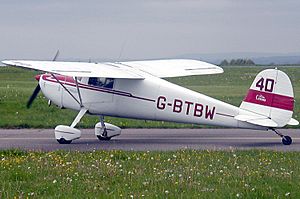
General aviation includes all civilian flying that isn't a regular airline flight. This can be:
- Business flights
- Private flights
- Flight training
- Ballooning
- Parachuting
- Gliding
- Hang gliding
- Taking aerial photos
- Air ambulances
- Crop dusting
- Reporting traffic
- Police air patrols
- Fighting forest fires
Each country has its own rules for aviation. General aviation rules often depend on whether the flight is private or commercial, and what kind of aircraft is used.
Many companies make smaller planes for private flying and flight schools. A big change for small planes has been the addition of advanced avionics (electronic systems) like GPS. These used to only be found in large airliners. Also, new composite materials make small planes lighter and faster. Very light planes (ultralights) and homebuilt aircraft are also popular for fun, as they are often cheaper and have fewer rules.
Military Aviation
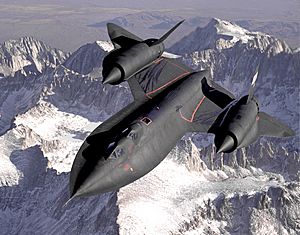
Simple balloons were used for spying as early as the 1700s. Over time, military aircraft have been built to do more and more amazing things. Companies compete to build planes for their country's military. Planes are chosen based on their cost, how well they perform, and how quickly they can be made.
Types of Military Aircraft
- Fighter aircraft are mainly used to destroy other aircraft. Examples include the F-15 and F-22.
- Ground attack aircraft are used to attack targets on the ground. Examples include the A-10 and AH-64.
- Bombers are used to attack bigger targets like factories or oil fields. Examples include the Tu-95 and B-52.
- Transport aircraft carry equipment and soldiers. Examples include the C-17 Globemaster III and C-130 Hercules.
- Surveillance and reconnaissance aircraft gather information about enemy forces. Examples include the U-2.
- Unmanned aerial vehicles (UAVs) are drones that fly without a pilot. They are mostly used for spying, but some can carry weapons or cargo. Examples include the RQ-7B Shadow.
- Missiles are rockets that carry warheads, usually explosives.
Images for kids
-
The Cessna 172 is the most produced aircraft in history
-
A USAF Thunderbird pilot ejecting from his F-16 aircraft at an air show in 2003
See also
 In Spanish: Aviación para niños
In Spanish: Aviación para niños


